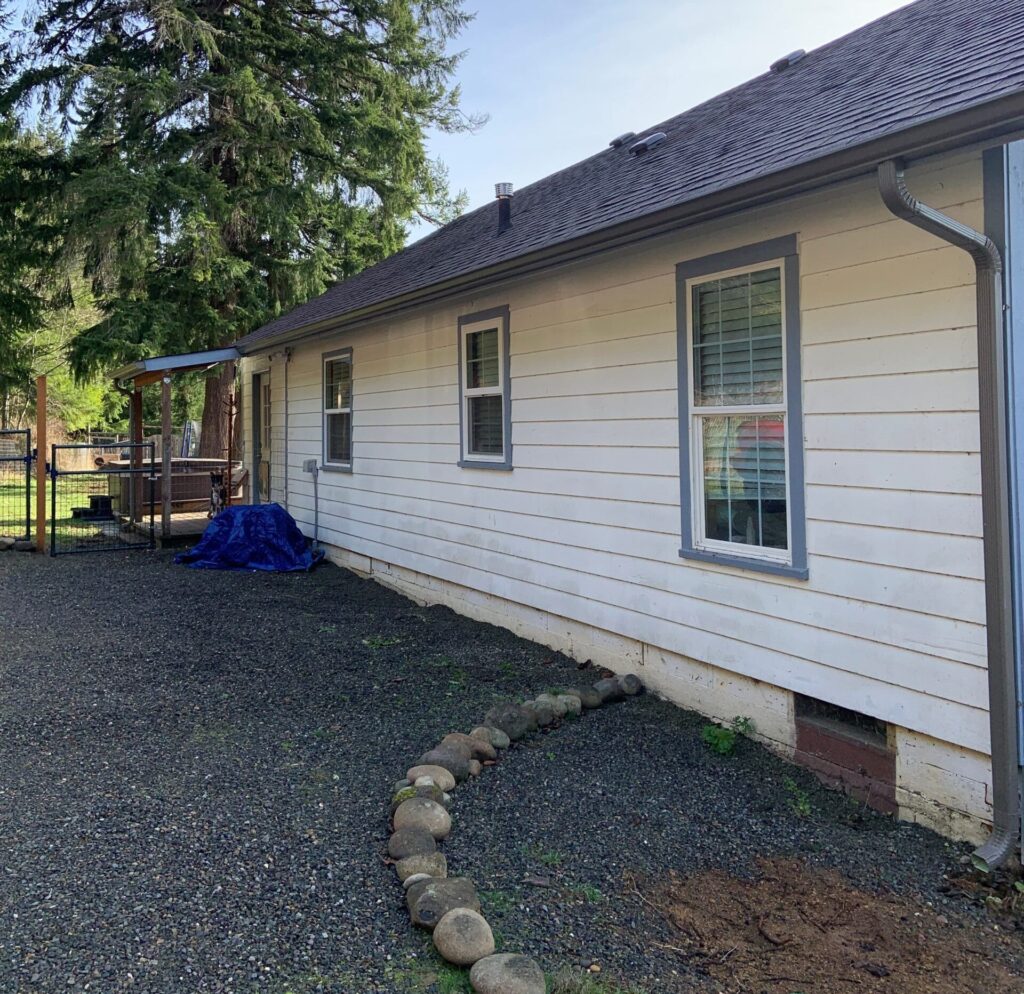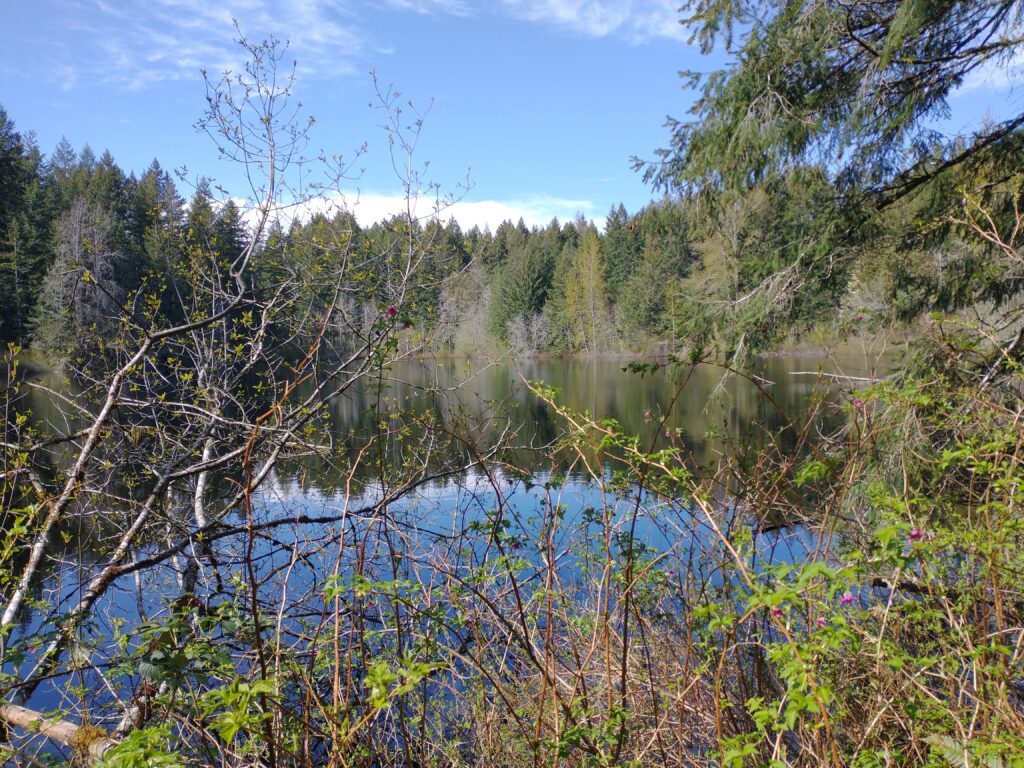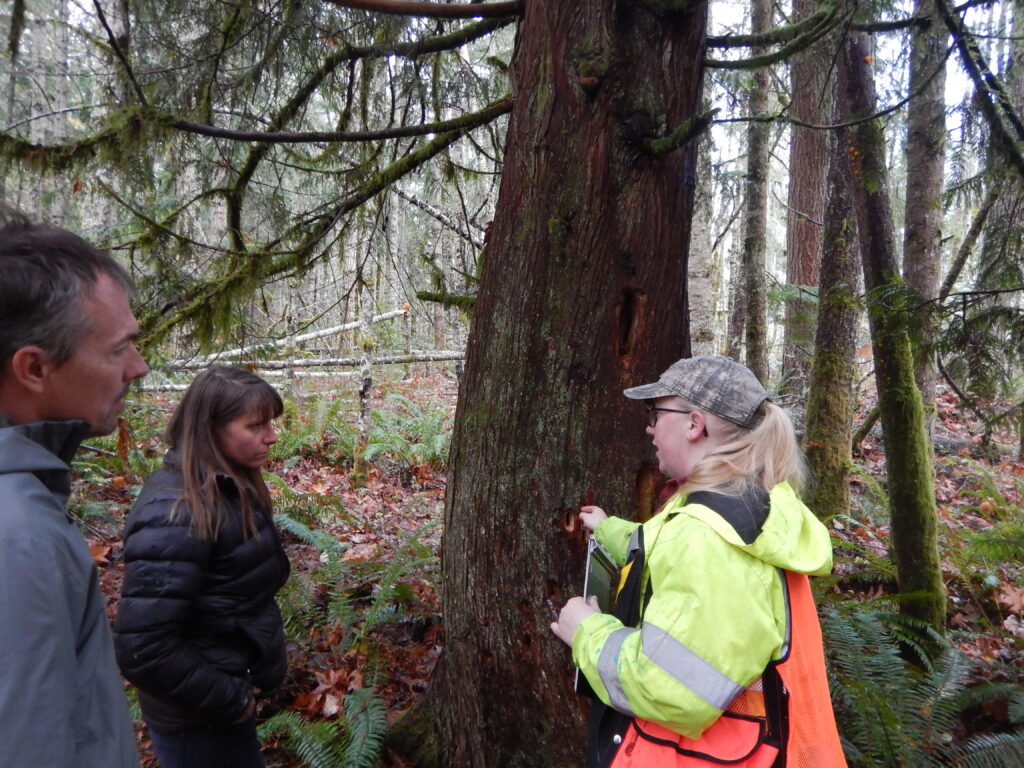Foresters help new and old landowners in South Puget Sound
By Margaret Kreder, Mason Conservation District
Since its establishment in 2020, the Regional Forestry Stewardship Program has helped over 240 non-industrial private forest landowners in the Southern Puget Sound area.
Through this program, Mason Conservation District foresters Margaret Kreder and Mark Mead assisted landowners across Kitsap, Mason, Pierce, and Thurston counties through phone, email, and site visits. They provided various services intended to help landowners conserve their forest lands, such as technical assistance recommendations, wildfire home assessments, the development of forest stewardship plans, and connections with financial assistance programs.
Benefits for New Forestland Owners
They helped Tara and Will, two relatively new forest owners who live on a 3.4-acre parcel in Thurston County. With just over 2 acres of forest adjacent to a much larger forested parcel owned by a non-profit organization, they called upon a Conservation District forester to get “general advice about small forest land management, tree thinning, and wildfire safety” to help improve their small forest as much as they could.
Tara’s favorite part of the experience was the personal site visit and face-to-face time with the forester who helped them identify and understand what resources were on their land. Tara noted she “appreciated how the visit was also an educational opportunity for my family,” as they learned about tree identification and forest health.
Another valuable part of the experience was the written guidance they received after the site visit, which they reference when choosing their next forestry project. With the risk for fire being one of their high priority concerns, Tara explained, “We installed gravel around the perimeter of our house and plan to do many more long-term fire safety improvements.”
As for the future, Tara says, “Someday we’d like to host community events on our property…which might include nature walks in the forest.” For now, they are working on thinning their forest and increasing its plant diversity by planting additional native trees and shrubs. “We are really grateful and appreciative of this program.”

New gravel buffer installed by Tara and Will to make their home more fire-resilient. (photo supplied by landowner)
Benefits for Seasoned Forestland Owners
More experienced forest owners with larger properties can also benefit from a visit by a Conservation District forester. Kit, who lives on a 197-acre property on Gig Harbor Peninsula, has had a longer relationship with her forestland.
She recounts, “My late mother bought the property in 1956 after having lost her farm in New Jersey through eminent domain…. I was 10 when we arrived. I lived here until I went to college, then moved back onto the land in about 2012.”
Though Kit has been with the property for a longer period of time, she only recently began the task of actively managing the land. “I was increasingly aware that I wanted to take better care and that it was important to learn and use modern forestry science.” She characterizes the previous management style as “benign neglect,” a state at which many small forestlands fall into without landowners understanding forest systems and the benefits of ecological forest management.

View across the water on Kit’s property to the main forest area.
One great help in beginning this active management was accessing financial assistance through programs offered by the Natural Resources Conservation Service (NRCS). Once she learned about these programs while updating her Forest Management Plan, she received a site visit from NRCS Conservationist Frank Curtin, alongside Conservation District foresters. The Conservation District foresters worked with NRCS to identify areas where Kit would be eligible through the NRCS’s Conservation Stewardship Program for financial assistance. The foresters “spent hours preparing documents needed for me to apply…our proposals were accepted, and now work is underway,” says Kit.
Her favorite part of the experience was “the back and forth of describing possible actions and discussing the pros and cons” as well as being involved in deciding what practices would take place. Going forward, Kit is working to create a highly diverse forest that will be great wildlife habitat, help capture water to replenish the water table, and provide income through commercial thinning that will also benefit the forest’s long-term health. Of the Regional Forestry Stewardship Program, she says, “It is a first rate program! My only regret is not having taken advantage of it sooner.”
Foresters Can Help with Multi-Purpose Land Use
Every landowner’s needs are different. Conservation District foresters are uniquely positioned to assist landowners, thanks to their connections and knowledge about a wide range of subjects including riparian habitat and farmland.
Clare and Peter, who live on 80-acres in Pierce County, have had their property for the last seven years, and have been renovating an old home there after purchase to live on site. “We spent the first several years living here getting to know the land and the general vibe of nature here in the PNW. After careful observation and lots of time spent among the trees, we had some general ideas of how we hoped to improve the forested areas, but needed help with the details,” says Clare of why they reached out to the Conservation District.
Like many in the region, Clare and Peter use their property for more than just forestry— they have riparian areas, pasture and livestock, a personal orchard, as well as a budding floral business. Following their site visit, they received a Forest Management Plan from their forester with details of their forest types, how to continue to care for the forest according to their goals and objectives, and how the forest may interact with their other ventures.

Clare and Peter talking with their forester, Margaret Kreder, on their property about woodpecker holes in one of their western redcedars.
Receiving the forestry plan was the favorite part of the experience for Clare: “Having not only a detailed overview of our property, but a long-term plan for how we can continue to improve and nurture it is invaluable.”
Understanding which practices were best suited to their land was vital to getting started with active management. Their future plans include restoring their property through a combination of thinning and replanting to establish a healthy, diverse forest. They also anticipate utilizing the forest for non-timber forest products such as mushrooms, medicinal plants, and greenery for floral arrangements.
Clare’s advice for others is simple: “Don’t delay! Reach out to your local forester to take advantage of this incredible program as soon as you can!”
Here's what others have said about the Conservation District Forestry Program:
This project has been funded wholly or in part by the United States Environmental Protection Agency under assistance agreement PC-01J22301 through the Washington Department of Fish and Wildlife. The contents of this document do not necessarily reflect the views and policies of the Environmental Protection Agency or the Washington Department of Fish and Wildlife, nor does mention of trade names or commercial products constitute endorsement or recommendation for use.
